Australia So Much to See
Copyright (C) 2013 AustraliaSoMuchtoSee.com. All reights reserved

The Mangowine Community Sheep Dip appears to be the earliest example of four community dips in the Nungarin area, with others being
at Danberrin, Knungajin and Talgomine.
In 1938, government funds were made available for the assistance of farmers. The
Agricultural Bank administered the funds, and favoured community sheep dips, to eradicate external parasites (mites, keds and lice),
as infestations caused significant loss of condition and productivity in sheep and damage to the wool from scratching.
Following shearing, sheep were taken through a race and into the dip, where they continued to swim down a channel, while being dunked
with a crook or stick to be fully submersed three times. Climbing out, they drained on a concrete slab from which excess water
ran back into the dip.
While the timber yards have now gone, the concrete dip and draining board remain.
Looking
along the dip from the entry point to the concrete draining area from the entry point above left.
Looking back along the dip
from the exit point above right.
Signage at right shows the plan of the dipping facility.
Following shearing, sheep were taken through a race and into the dip,
where they continued to swim down a channel, while being dunked with a crook or stick to be fully submersed three times. Climbing
out, they drained on a concrete slab from which excess water ran back into the dip.
Sheep entered the dip from the top of the
diagram.
After its construction in the late 1930s, this sheep dip was used for several decades by local farmers. Originally arsenical
dipping powders were mixed into the water in the dip. Other chemicals were later used. Arsenical sheep dipping products
were finally banned in Australia in 1986 due to chemical residues.
Labour intensive plunge dipping was eventually made superfluous with the introduction of at first sheep showers, then pour-on chemicals. Mites and keds were eliminated, and lice infestations are now uncommon.
Rock formations on the eastern edge of Eaglestone Rock. When Lake Brown waters are high, water reaches this edge.
Quaint cut-outs representing sheep and models of dogs have been added to the area as additional appeal.
Mangowine Community Sheep Dip
As we drove towards the rock, the abseiler we had seen climbing from the distance was now much higher up the rock face. We saw
her climb further on these ropes, see below.
Approaching Lake Campion and the Eaglestone Nature Reserve, there were large expanses of the native everlasting Cephalipterum drummondii.
An individual flower below.
The lovely butterfly Danaus chrysippus landed on this Hakea recurva while I was photographing it.
Park and Wildlife Service provides several camping areas around Eaglestone Rock, with the largest being at the base of the bluff
rock where climbing takes place. There is a pit toilet here for the use of campers and day visitors. Other areas have
no facilities apart from an occasional picnic table with seating. Camping here is fee free. Being a nature reserve, pets
are not permitted.
At right is a balancing rock, and while not truly balancing, the rock that continues to the base has
a crack the full way through.
Lake Campion nature reserve encompasses a large salt pan, rarely full of water and often dry. The lake is known as Lake Brown
(not to be confused with Lake Brown locality further north). We saw it with some water present.
Eaglestone Rock has basic camping, wildflowers, and the rock is popular for abseiling on the sheer face of the peak. A young
lady can be seen nearing the top.
Our first glimpse of Eaglestone Rock from the distance. Zooming in, a lone abseiler was scaling the rock to the left of
the split, with a series of ropes through well secured bolts in the rock.
There are a number of different climbs with
these pegs on both sides of these twin rocks.
The pegs were fitted by a climbing group around twenty years ago, not by the Parks
and Wildlife Service which administers Eaglestone Rock Nature Reserve.
The shallow Lake Brown, adjoining the eastern edge of Eaglestone Rock. There is a small camping area here.
Double-click here to edit the text.
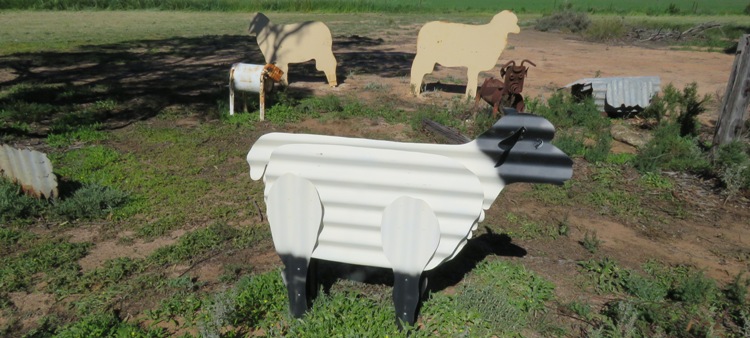
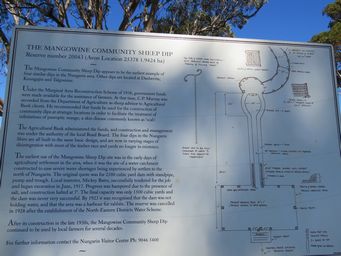
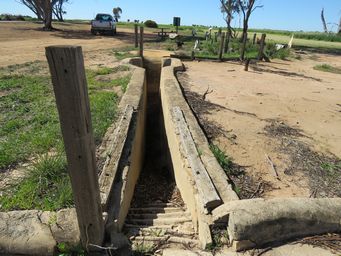
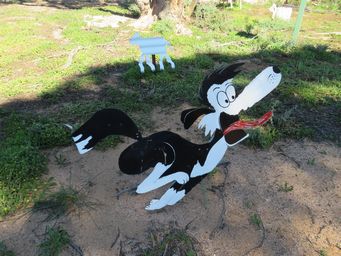
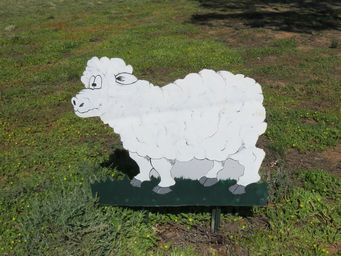
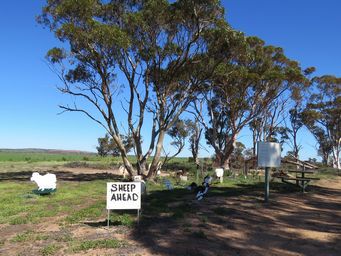
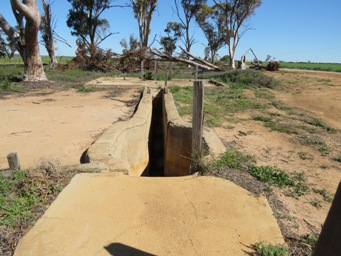
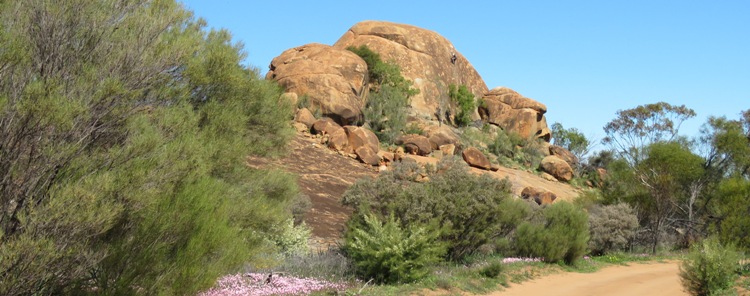
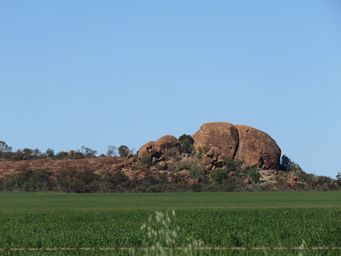
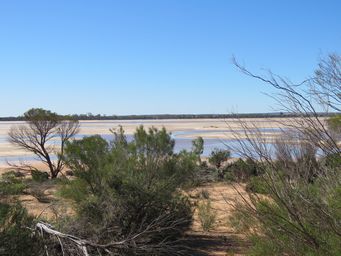
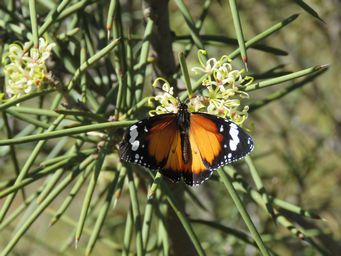
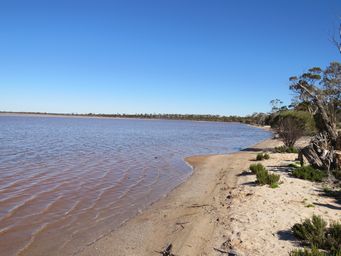
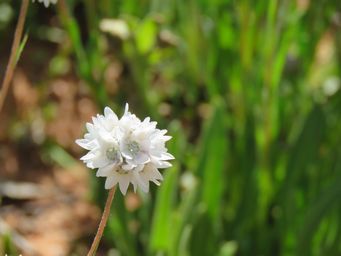
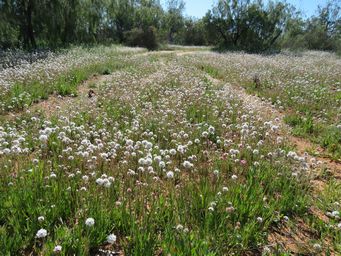
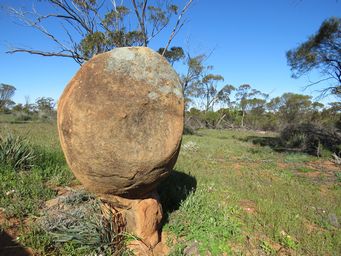
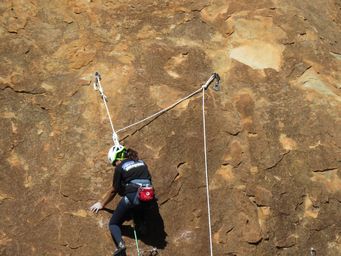
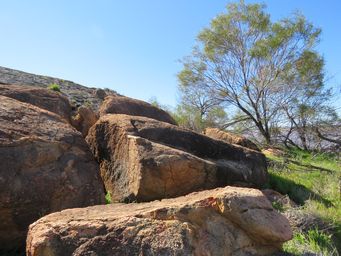
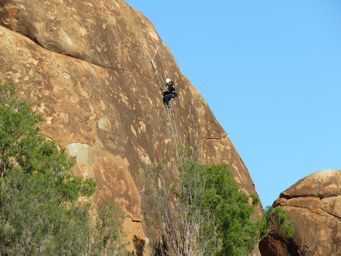
Further south we passed Talgomine Nature Reserve, and Talgomine Rock (Mount Moore), but did not call in this time as we had visited
it before.


















